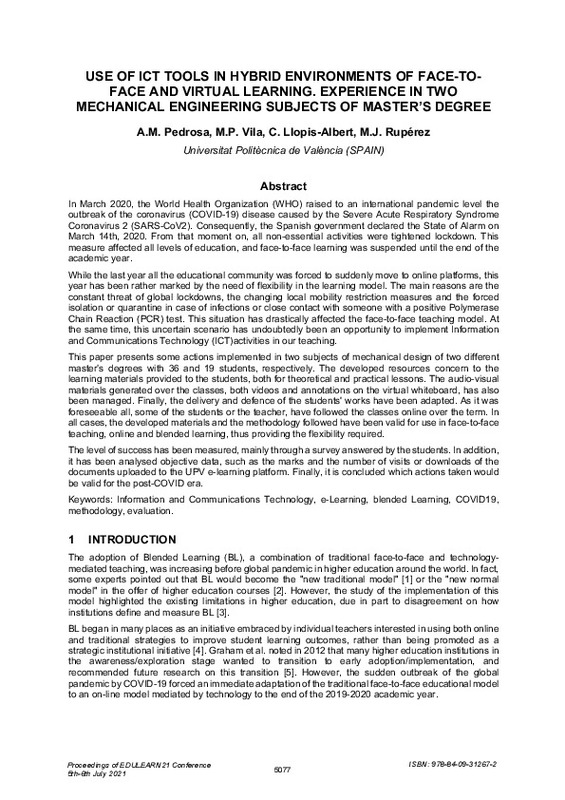JavaScript is disabled for your browser. Some features of this site may not work without it.
Buscar en RiuNet
Listar
Mi cuenta
Estadísticas
Ayuda RiuNet
Admin. UPV
Use of ict tools in hybrid environments of presential and virtual learning. Experience in two mechanical engineering subjects of master's degree
Mostrar el registro completo del ítem
Pedrosa, AM.; Vila Tortosa, MP.; Llopis-Albert, C.; Rupérez Moreno, MJ. (2021). Use of ict tools in hybrid environments of presential and virtual learning. Experience in two mechanical engineering subjects of master's degree. IATED Academy. 5077-5085. https://doi.org/10.21125/edulearn.2021.1048
Por favor, use este identificador para citar o enlazar este ítem: http://hdl.handle.net/10251/177200
Ficheros en el ítem
Metadatos del ítem
| Título: | Use of ict tools in hybrid environments of presential and virtual learning. Experience in two mechanical engineering subjects of master's degree | |
| Autor: | ||
| Entidad UPV: |
|
|
| Fecha difusión: |
|
|
| Resumen: |
[EN] In March 2020, the World Health Organization (WHO) raised to an international pandemic level the
outbreak of the coronavirus (COVID-19) disease caused by the Severe Acute Respiratory Syndrome
Coronavirus 2 (SARS-CoV2). ...[+]
|
|
| Palabras clave: |
|
|
| Derechos de uso: | Reserva de todos los derechos | |
| ISBN: |
|
|
| Fuente: |
|
|
| DOI: |
|
|
| Editorial: |
|
|
| Versión del editor: | https://doi.org/10.21125/edulearn.2021.1048 | |
| Título del congreso: |
|
|
| Lugar del congreso: |
|
|
| Fecha congreso: |
|
|
| Código del Proyecto: |
|
|
| Agradecimientos: |
Authors gratefully acknowledge the financial support of the Vicerrectorado de Estudios, Calidad y
Acreditación and the Vicerrectorado de Recursos Digitales y Documentación of the Universitat
Politècnica de València ...[+]
|
|
| Tipo: |
|









